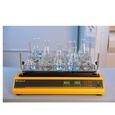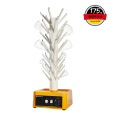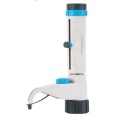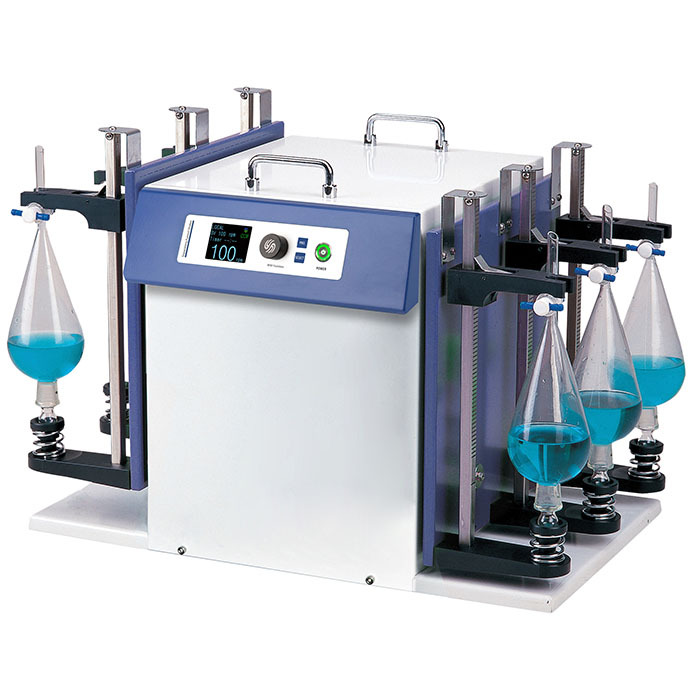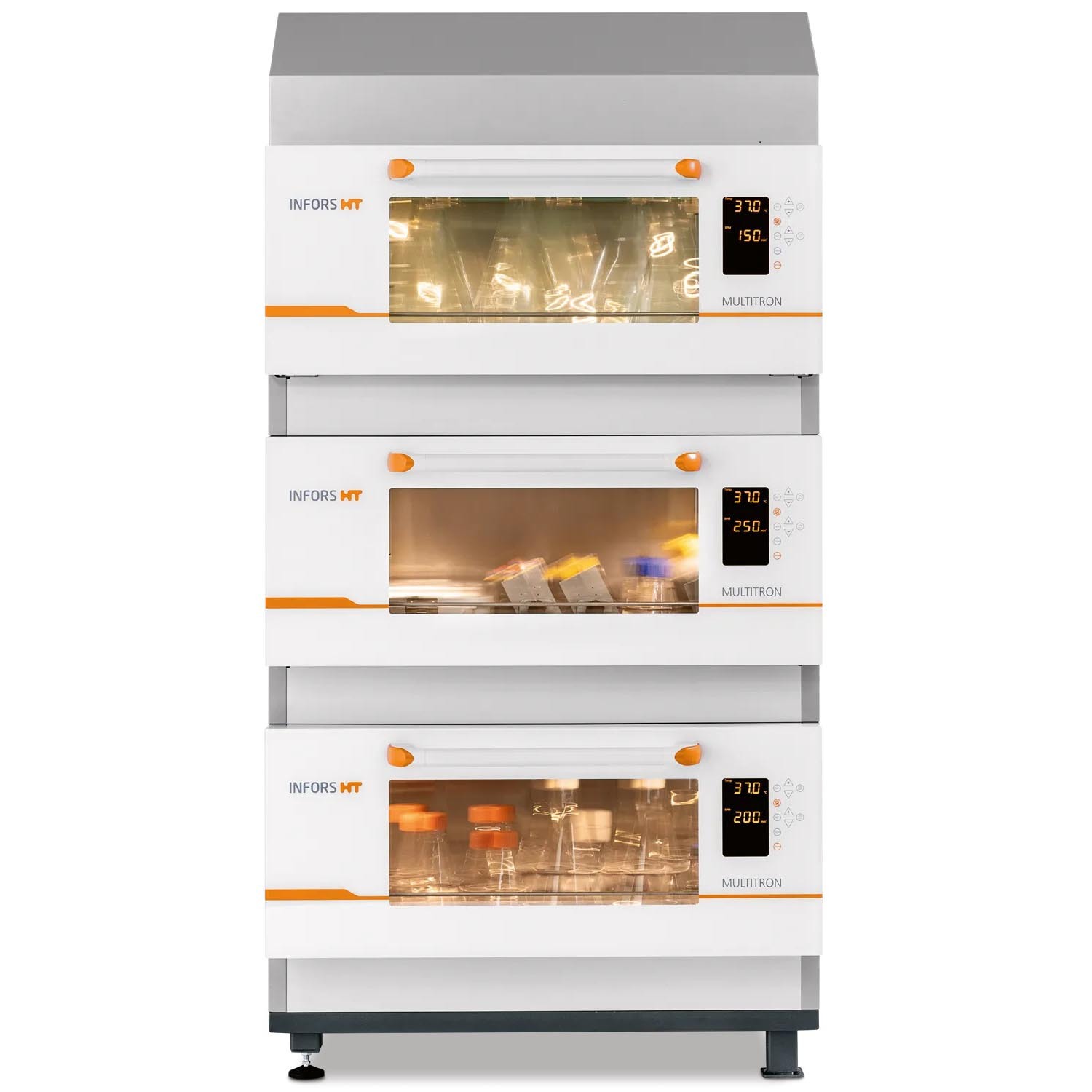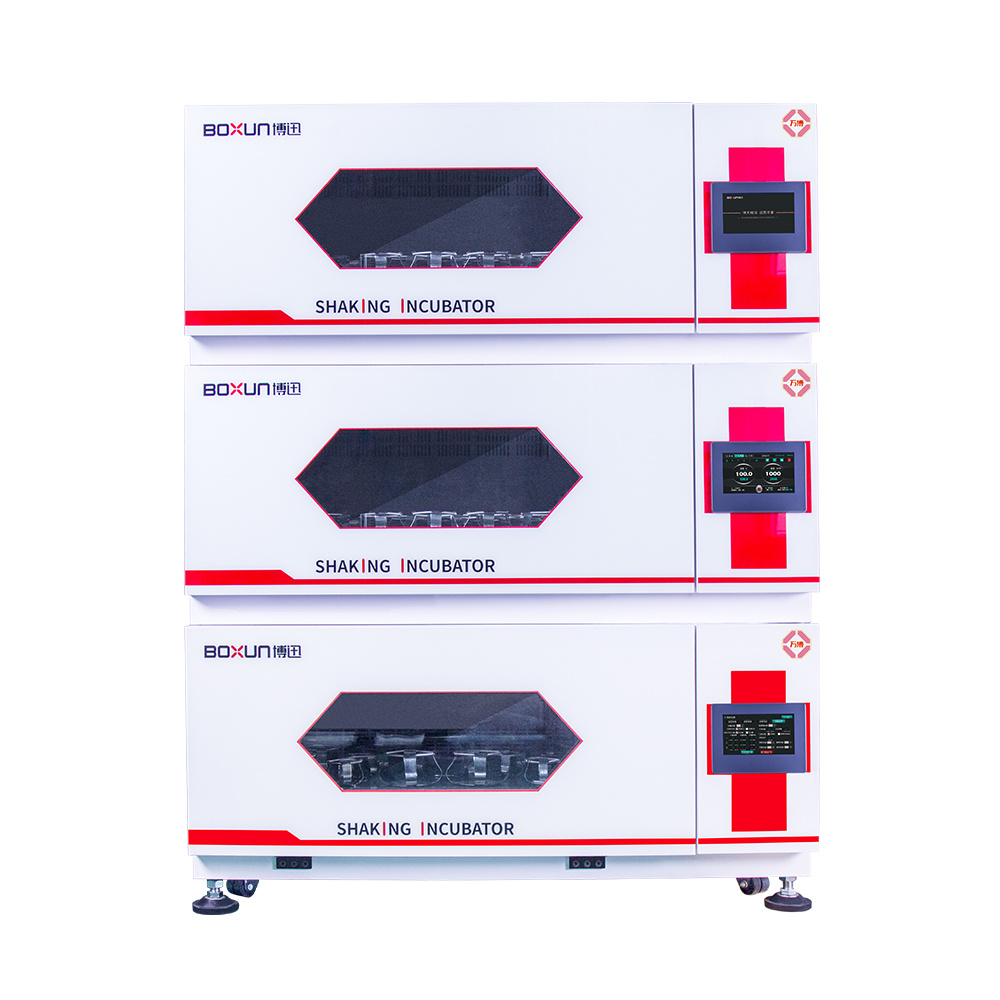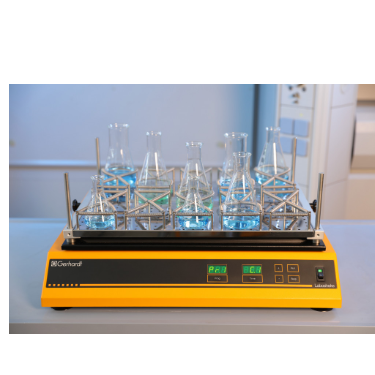
方案详情
文
荷兰瓦赫宁根大学与研究中心土壤物理和土地管理小组,在西班牙东部农业土壤中污水污泥的使用成为微塑料来源载体Sewage sludge application as a vehicle for microplastics in eastern Spanish agricultural soils
方案详情

荷兰瓦赫宁根大学与研究中心土壤物理和土地管理小组,在西班牙东部农业土壤中污水污泥的使用成为微塑料来源载体Sewage sludge application as a vehicle for microplastics in eastern Spanish agricultural soilsEnvironmental Pollution 261 (2020) 114198 2P. van den Berg et al. / Environmental Pollution 261 (2020) 114198 Contents lists available at ScienceDirect Environmental Pollution ELSEVIER journal homepage:www.elsevier.com/ locate/envpol 在西班牙东部农业土壤中污水污泥的使用成为微塑料来源载体 Sewage sludge application as a vehicle for microplastics in eastern Spanish agricultural soils* Pim van den Berg , Esperanza Huerta-Lwanga a .b .*, Fabio Corradini a .c , Violette Geissen a Soil Physics and Land Management Group. Wageningen University & Research, Droevendaalsesteeg 3, 6708PB, Wageningen, the Netherlands bAgroecologia, El Colegio de la Frontera Sur, Unidad Campeche, Av Poligono s/n, Cd. Industrial, Lerma, Campeche, Mexico Instituto de Investigaciones Agropecuar i as, INIA La Platina, Cas i lla 439, Correo 3. Santiago, Chile 瓦赫宁根大学研究中心土壤物理和土地管理小组 ARTICLEINFO ABSTRACT Article history:Received 24 November 2019Received i n revised form 31 J anuary 2020Accepted 14 February 2020Available online 17 February 2020 Keywords: Microplastics Agr i cultura l soils Sewage sludge Microplastic pollution is becoming a major chal l enge with t he growing use of plastic. In recent years,research about microplastic pollution in t he environment has become a f i eld of study with increased interest, with ever expanding f indings on sources, sinks and pathways of microplastics. Wastewater treatment plants effectively remove microplastics from wastewater and concentrate them i n sewage sludge which is often used to ferti li se agricultural fields. Despite this, quantification of mic r oplastic pollution i n agricultural fields through the application of sewage sludge i s largely unknown. In l i ght of this i ssue, four wastewater treatment plants and 16 agricultural f ields (0-8 sewage sludge applications of 20-22 tons ha-1 per application), located in the east of Spain, were sampled. Microplastics were extracted using a floatation and filtration method, making a distinction between light density micro-plastics (p<1 g cm-3) and heavy density microplastics (p>1 g cm-3). Sewage s ludge, on average, had a light density plastic load of 18,000±15,940 microplastics kg- and a heavy density plastic l oad of 32,070±19,080 microplastics kg -1. Soi l s without addition of sewage sludge had an average light density plastic load of 930±740 microplastics kg-and a heavy density plastic l oad of 1100 ±570 microplastics kg -1. Soils with addi t ion of sewage sludge had an average light densi t y plastic l oad of 2130 ±950microplastics kg -and a heavy density plastic l oad of 3060± 1680 microplastics kg -1. On average, soils’plastic loads increased by 280 light density microplast i cs kg- and 430 heavy density microplastics k g with each successive application of sewage sludge, indicating that sewage sludge application results i n accumulation of microplastics in agricultural soils. ◎ 2020 The Authors. Published by E l sevier Ltd. This is an open access article under the CC BY-NC-ND license (http://creativecommons.org/licenses/by-nc-nd/4.0/). 1. Introduction Microplastics are commonly defined as plastic particles with a diameter ranging f rom a few um to 5 mm. Microplastic (MP)pollution has been detected in numerous environmental com-partments, such as the marine, terrestrial and atmospheric envi-ronment (Allen et al., 2019; Andrad y, 2011; De Souza Machado et al., 2018). Research has primarily been focussed on the marine environment and quantification of sources of MP pollution i n the terrestrial environment has largely been lacking (B lasing and * This paper has been recommended for acceptance by Maria Cristina Fossi. * Corresponding author. Soil Physics and Land Management Group, Wageningen University &Research, Droevendaalsesteeg 3, 6708PB,Wageningen, the Netherlands. E-mail addresses: esperanza.huertalwanga@wur.nl , ehuerta@ecosur.mx (E. Huerta-Lwanga). Amelung, 2018; Nizzetto et al., 2016; Weithmann et al., 2018).Microplastics can have a negative impact on soil biota by increasing mortality rate and reducing growth and reproduction rates of soil life (Huerta Lwan g a et a l ., 2016; Zhu et al., 2018). Wastewater treatment plants (WWTPs) are receptors of microplastics derived from industries, domestic wastewater and stormwater (Mahon et al., 2016). Studies have shown that waste-water treatment plants (WWTPs) effectively remove microplastics from wastewater, with a removal rate of up to 99% (B lasing an d Amelung, 2018; Magnusson and Norén, 2014; Murphy et al.,2016; Sun et al., 2019), concentrating microplastics in sewage s l udge. Sewage sludge is widely used as a fertilizer because of i ts richness in organic and inorganic nutrients, its soil conditioning effects and economic advantageousness (N izzetto et al., 2016;Singh and Agrawal, 2008). However, the sewage sludge’s micro-plast i cs remain in the soil much longer than the nut r ients, posing a threat to individual soil life and potential l y even soil ecosystems https://doi.org/10.1016/j.envpol.2020.114198 (De Souza Machado et al., 2018). Spain has an extensive use of sewage sludge in the agricultural sector with 65% of its country's sewage sludge production being recycled through agricultural soils, while Europe’s average l i es at 40% (Roig et al ., 2012). First studies of plastic pollution in agricultural soils by applica-tion of sewage sludge were performed almost 15 years ago (Zubr i s and Richards, 2005). However, quantification of microplastic pollution i n agricultural soils by application of sewage sludge re-mains largely absent, with perhaps a few exceptions (e.g. Corradini et al., 2019; Xu et al., 2020). To address this knowledge gap, this study has evaluated the microplastic content of 16 agricultural f ields, the number of sewage sludge applications to these fields, the amount of sewage sludge applied and the microplastic content of sewage sludge of 4 WWTPs in the east of Spain. Our hypothesis was that receiving sewage sludge l eads to a significant increase in accumulation of microplastics in agricultural soils. 2. Materials and methods 2.1. Study site The study area for this research is located in the vicinity of Valencia, in the east of Spain (F i g.1). A total of 16 fields were sampled for soil of which 11 had a history of sewage sludge application. Cereals were cul t ivated on most fields, with t he exception of two f ields which were olive orchards (Table 1).Number of sewage sludge applications ranged f rom 1 to 8 appli-cations and the applicat i on load was 20-22 dry tons ha -1 per application. 4 WWTPs were selected and sampled for sewage sludge, 3 of which were the sewage sludge source of t he last application of some of the sampled f ields. Information on t he origin of previous sewage sludge applications could not be obtained. The WWTPs were chosen to obtain sewage sludge samples from WWTPs with a diversity of size, treatment types and socio- geographical location. The WWTPs were located near Albaida,Canet d'En Berenguer, Ont i nyent and Sagunto. A more detailed description of the WWTPs is included i n Table S1 in the supple-mentary material. 2.2. Sampling Per f ield, soil samples were collected at 4 randomised points at a depth of 0-10 cm and 10-30 cm using a soil auger. This sampling depth was chosen to cover the active soil layer as soil life i s concentrated in the top layer, and the rooting depth of cereals and ploughing depth do not exceed 30 cm. Roughly 100 g of soil was sampled and collected into sealable polypropylene bags. I nterviews were held with landowners to rule-out land management pract i ces that could influence the microplastic content of t he soil e.g. appli-cation of plastic mulch or compost (Ril l ig, 2012; Van Schothorst,2018). Per WWTP , 4 sewage sludge samples of roughly 250 g were taken and collected into sealable polypropylene bags. 2.3. Extrac t ion of microplast i cs Extraction of microplastics was performed by using a modified floatation method of Zhang et al. (2018) and identification was based on the circularity , transparency and shininess under heating.During all the laboratory work cotton lab coats were worn to limit the contamination of the samples f rom synthetic clothing. All the samples were dried for 72 h at a temperature of 40 °C. I t was decided to use 3±0.005 g per sample to l imit t he obscureness effect of organic materials in further analysis while still obtaining reliable data. Two extraction steps were performed on the same sample with different l iquids, one with distilled water and another with a sodium iodide mixture. The former led to a floatation of plastic par t icles with p<1 and the latter led to a f loatation of plast i c particles with 1> p <1.7. From here on the di f ferent densities of plastic will be referred to as light density plastic and heavy density plastic respectively. Fig. 1. Study area located in the east of Spain. Dots i ndicate soil sampling points. Table 1 Details on number of sewage sludge applications, sewage sludge application rates and sources, crop cultivation and ploughing strategy of sampled f ields. Field number Number of sewage Origin of last Crop Ploughing Application sludge applications sludge application rate (t ha-1) 1 一 Cereal yes 2 一 Cereal yes 3 一 Olive no 4 一 Cereal no 一 5 Olive no 一 6 1 Sagunto Cereal no 22 7 3 Sagunto Cereal yes 22 8 3 Sagunto Cereal yes 20 (conservation tillage) 9 3 Sagunto Cereal yes 20 10 4 Ontinyent Cereal yes 20 11 4 Ontinyent Cereal yes 20.5 12 5 Ontinyent Cereal yes 22 13 5 Ontinyent Cereal yes 22 14 6 Albaida Cereal yes 21 15 8 Sagunto Cereal yes 20 (conservation tillage) 16 8 Sagunto Cereal yes 21 The subsample was put i n a 50 ml laboratory tube, 40 ml of distilled water was added and then mixed using a a Gerhardt Lab-oshake at 120 RPM for 2 h. The sides and cap of the tube were rinsed off, topped up to 50 ml and cent r ifuged for 10 min at 3000RPM using a Heraeus Varifuge 3.0 to force sediments to settle at t he bottom. Supernatant material was filtered using a Whatman 91filter with an 11 um pore size. Fi l ters were taken aside and replaced when clogged, and stored i n sealed petri dishes. These steps were repeated until no more floating material was observed with a minimum of 3 repetitions. After extraction of light density micro-plastics (MPs), the subsample was dried at 40°C and heavy density MPs were extracted using the same procedure, but by using a 600 g 1-1 NaI l iquid (p ~ 1.7 g cm-3) i nstead of di s tilled water. 2.4. Observation of microplastics Filter residues were placed on a glass plate and 2 pictures were taken using a ZEISS Stemi 508 microscope, with a heating period of 8-10 s at 120-130 °C i n between t he picture taking. The pictures were compared and microplastics were ident if ied, based on an increase in circularity, transparency and shininess after heating (F i g. 2, Zhang et al., 2018). The plastic particles' count, maximum diameter and shape (f ibre, fragment or film) of t he preheating picture were analysed using ImageJ photoshop software (Schneider et al., 2012). To get further insight on the t ype of plastic present in sewage sludge and soils a microscope coupled with a spectrometer was used to perform a micro Four i er transform i nfrared (uFTIR)analysi s (Agilent Technologies Cary 600 series FTIR spectrometer).Five frequently found particles in the samples were scanned at 1000-3500 cm-1 wavelength with a 4 cm-resolution, measuring transmittance to record their absorbance spectra. 2.5. Data analysis A Shapiro-Wilk tests showed a non-normal distribution of data (p <0.05). Differences in quant i ties and size of MPs of sample groups were determined with Mann-Whitney U tests. Correlations in quantities and size of MPs of sample groups were determined with Spearman tests. Descriptive statistics were used to charac-terise previous test results. All the statistical analyses were per-formed in SPSS and a significance l evel of 0.05 was chosen for this study. 3. Results 3.1. Application vs. no application Microplastics were found in 97% of the analysed samples. Soi l s without application of sewage sludge contained, on average,930±740 l i ght density MPs kg-and 1100±570 heavy density MPs kg -1. Soi l s with application of sewage sludge contained, on average,2130 ±950 light density MPs kg-and 3060±1680 heavy density MPs kg. A significant difference in MP content was found be-tween soils with a history of sewage sludge application and soils without sewage sludge appl i cation for both densities of plastic (p <0.05). The size distribution of microplastics showed that t he majority of the MPs are present in the lower spectrum of the microplastic size range (F ig. 3), with the l argest number of MP Fig. 3. Light density (LD) and heavy density (HD) microplastic (MP) counts per kilo-gram of dried soil of fields with application of sewage sludge (A. n = 88) and f ields with no application of sewage sludge (NA, n=40) and their respective standard error.Signi f icant di f ferences between sample groups (p <0.05) ar e i ndicated with lowercase letters. No differentiation in depth was made in this analysis. present in the size bin 150-250 um. Sewage sludge contained an average of 18,000±15,940 light density MPs kg-l and 32,070±19,080 heavy density MPs kg-. The microplastic content of sewage sludge would resul t i n a total average of 3.78 ×10° l ight density MPs ha-l and 6.74×10°heavy density MPs ha - entering agricultural fields per application. Some differences in sewage sludge's MP content between WWTPs was observed, but no conclusive cause could be found (Ta ble S2, sup-plementary material). Fig. 4. Microplastic counts per kg dried soil by number of sewage sludge applications for light density plastic (black) and heavy density plastic (grey) n = 128. Boxplots showing median, 25%-75% range, range without outliers and outliers. Dif f erent letters indicate significant difference among sample groups (p<0.05). Differences in light density plastic content are indicated with a lower case letter and difference in heavy density plastic content are indicated with capital letters. L ines are showing Spearman correlat i on coe f ficient. On average, an increase in microplastic content was observed with each successive sludge application (F ig. 4). Spearman tests showed a significant positive linear correlation between the num-ber of applications and MP content (Rs =0.593 for light density plastic and Rs = 0.668 for heavy density plastic, p <0.05). on average, soi l microplastic content would increase with 280 l ight density MPs kg-l and 430 heavy density MPs kg- dried soil with each successive sewage sludge application. 3.3. Differences in depth No significant depth-dependent differences in MP l oad for both densities of plastic were observed within each sample group (Fig.5). When only looking at f ields were no ploughing was done,samples taken at fields with application of sludge at a depth of 0-10 cm had a light density MP l oad of 1730 ± 920 kg-l and a heavy density MP load of 3410 ± 2330 kg-. Respective samples taken at a depth of 10-30 cm contained, on average, 1610±920light density MPs kg-1 and 3180 ±2430 heavy density MPs kg-.For samples taken at a depth of 0-10 cm at fields were no ploughing was done and no sewage sludge was applied, a l ight density MP load of 960±420 kg -and a heavy density MP load of 1140±450 kg -l was found. Respect i ve samples taken at a depth of 10-30 cm contained, on average, 920 ± 480 l ight density MP kg-1and 1070 ± 570 heavy density MP kg-. The slight difference in plastic content between depths for fields which were not being ploughed remained statistically not significant (p >0.05). 3.4. Plas ti c types For al l sample groups, the majority of the present MPs were fragments (Fig. 6). In general, l ight density plastic had more fibres and less films than heavy density plastic. Plastics in soils that had not received s l udge had the smallest share in fibres and fi l ms and Fig. 5. A comparison of depth dependent light density (LD) mic r oplastic count k g-1and heavy density (HD) microplastic count kg-l found in soils which had received no application of sewage sludge (NA) and soils which had received sewage sludge appl i cation (A). Signif i cant di f ferences (p <0.05) between sample groups ar e i ndicated with l ower case letters. Fibres ■ Soil NASoil AP 口Sludge Fig. 6. A comparison of t ypes of plast i c found i n soil s which had received no appli-cation of sewage sludge (NA). soils which had received sewage sludge applicat i on (AP)and sewage sludge, for light density plastic (A) and heavy density plastic (B). Signifi-cant differences (p <0.05) between sample groups are indicated with lower case letters . the largest share in fragments out of all the sample groups. The uFTIR analysis showed that out of 5 part i cles, 3 were polypropylene (PP) and two were polyvinylchloride (PVC). The uFTIR results are shown in Fig. S 1 in the supplementary material. 4. Discussion 4.1. Accumulation of microplastics in soils Our findings strengthen the hypothesis t hat microplastics accumulate in the soi l with each successive sewage sludge appli-cation. Soils with a history of sewage sludge application had, on average, a 256% higher microplastic content than soi l s without application of sewage sludge. Sewage sludge was f ound to be, by f ar,the most polluted entity of this study. The majority of the plastic particles found had a density >1 g cm-3, underlining the impor-tance of extracting heavy density MPs to fully grasp plastic pollution. Other studies report i ng microplastic content in sewage sludge showed slightly lower particle loads compared to the results found in this study. A study about numerous WWTPs in China reported an average of 22,700± 12,100 particles kg-l sewage sludge (L i et al.,2018). Particle loads of studied sewage sludge i n Ireland ranged from 4196 to 15,385 MP kg-(M ahon et al., 2016). In Chile, a me-dian particle load of 34,000 particles kg-1 sewage sludge was found (Corradini et al., 2019). Seasonal variability, different socio-geographical locations and di f ferent treatment types may explain some of the variation found (Li et al., 2018; Mahon et al., 2016). Comparing the plastic load of soils without application of sewage sludge with other studies proved di f ficult due t o numerous uncontrolled sources of microplastics that are difficult to quantify.An example of the previous mentioned i s the atmospheric trans-port and deposition of microplastics. Al l en et al. (2019) r eported atmospheric deposition rates of 365 MP m-²d-1 in t he Spanish Pyrenees. Furthermore, water and wind erosion are suspected to be transporters of microplastics (Hurley and Nizzetto, 2018; Rezaei et al., 2019), both acting as possible sources or sinks. Somewhat comparable studies were those of Van Schothorst (2018) and Huerta Lwanga et al . (2017). Van Schothorst (2018) found an average of 2341 ± 1248 light density MPs kg-1 for fields in Carta-gena, Spain that applied biodegradable plastic mulch while this study found a much lower particle load. A more comparable par ticle load of 870± 1900 MP kg- was found in home gardens’ soils in Mexico by Huerta Lwanga et al.(2017). Corradini et al. (2019) reported a median between 1100 and 3500 MP kg- dried soil for fields in Chile with 1-5 applications Which is 2 times lower than t he range of medians found in this study (2000-7600 MPkg -) while the application rate was 2 times higher (40 tons ha-1). I t has to be noted that a denser extraction liquid was used in our study (p=1.7 g cm-3 versus p=1.55gcm-3)which could extract a wider range of plastic types. Furthermore, the authors reported an average of 34,000 MP kg -1 dried sludge while this study found an average of 50,000 MP kg-1sludge. No difference in MP load was found between the sampled depths. The major i ty of the sampled fields were being ploughed,mixing the top soil . Earthworms could transport and mix micro-plastics in the top soi l even further (Huerta Lwanga et al., 2016).Furthermore, it may be speculated that a downward water f l ow may also wash out MPs to deeper soil layers or even the ground-water (Hurley and Nizzetto, 2018; Yu et al., 2019). The majority of the MPs found were fragments f or all sample groups. A signi f icant difference in fibre content was observed be-tween soils that had received sewage sludge and soi l s that had not received sewage sludge, reaffirming that synthetic fibres can be used as an indicator for past sewage sludge appl i cation (Zubris and Richards, 2005). The found results show that microplastics accumulate in t he terrestrial environment. This raises the question to what extent microplastics are being remobilised and what pathways they could take. Studies indicate that micro sized plastics are too big to be taken up by plants, but when microplastics degrade i nto smaller pieces and certain size thresholds are reached, plants can take up and transport these particles (He et al., 2018; Ng et al.,2018). Plant species vary in their uptake, translocation and accumulation of contaminants due to a range of anatomical and physiological dif-ferences (Ng et al.,2018). However, to the best of our knowledge, no study has been undertaken to look at uptake of microplastics by cereals specifically. In Spain, sludge is widely used on cereal fields and therefore looking at the uptake and transport of nano sized plastic particles within cereal plants would be an i nteresting topic for future research. 4.2. Method limitations One of the main benefits of the chosen method was that it provided a simple and low-cost t echnique to extract and i dentify microplastics. However, the identification of microplastics remains an arbitrary procedure in which human error could have resulted in false posi t ives. Previous studies have shown that presence of organic materials hamper the analysis of taken pictures (Van Schothorst , 2018; Zhang et al., 2018). In this study some pictures were clouded by organic materials, complicating the analysis. We would propose the use of an extra extraction step with a l i quid with a density i n between most organic materials and plastics. Ethanol is deemed a suitable l iquid, however the efficiency of removing organic materials and the effect on plastic particles stands un-studied. Furthermore, the use of a centr i fuge (3000 RPM) r esulted in a speed up sett li ng process of sediments and turned out to be a considerable timesaving component for this methodology. There is no general i sed protocol to report microplastic content.Microplastics are being reported per surface area, per weight, per volume or as a weight ratio (Cole et al ., 2011; Corradini et al., 2019;Horton et al ., 2017) hampering comparison between studies. It is crucial to introduce standardised units to promote data exchange and comparison. It was therefore decided to report our results in particles per weight as proposed by Horton et al. (2017). No method validation could be performed due to the lack of natural blank samples. As previously discussed, even soils without application of sewage sludge contained plastic particles, making them unsuitable as blank. Zhan g e t al. (2018) reported 90% recovery rates and i t is expected that our method harvested similar recovery rates. Some contamination of samples was observed during the picture analysis. This is a renowned issue across different micro-plastic studies (Corradini et al.,2019; Horton et al., 2017; Zhang and Liu, 2018) and taking a l arger amount of soil/sludge would limit the influence of contamination on the results. 5. Conclusion Application of sewage sludge causes increased presence of microplastics in agricultural soils. By evaluating fields with varying numbers of sewage sludge applications, evidence was found of accumulation of microplastics with each successive application.Quantifying transport of microplastic within fields and remobili-sation to other environmental compartments pose a difficult yet essential task to understand the fate of plastic in the overall envi-ronment . Currently, there are no threshold values for microplast i cs in soils l eading to a negative impact on soil quality. CRediT authorship contribution statement Pim van den Berg: Data curation, Formal analysis, Investigation,Software, Writing - original draft, Writing - review & editing.Esperanza Huerta-Lwanga:Conceptualization,Supervision,Methodology, Writing - review & editing. Fabio Corradini: Data curation, Formal analysis, Investigation, Software, Writing-original draft, Wri t ing- review & edi t ing. Violette Geissen: Writing-re-view & editing. Acknowledgements We would like to thank EPSAR and Global Omnium for granting access to severa l wastewater treatment plants and allow sampling of sewage sludge. Furthermore, we would l i ke to thank landowners of the sampled fields for allowing sampling at their fields and providing information about management practices. Lastly, we would like to thank everyone else who contributed in some way. This research did not receive any specific grant from funding agencies in the public , commercial, or not-for-prof i t sectors. Appendix A. Supplementary data Supplementary data to this article can be found online at http s://doi.o rg /10.1016/j .envpol.2020.114198. References Allen, S.. Allen, D., Phoenix, V.R., Le Roux, G., Jimenez, P.D., Simonneau, A., Bine t , s.,Galop, D., 2019. Atmospheric transpor t and deposition of microplast i cs i n a remote mountain catchment. Nat. Geosci. 12 (5).339. Andrady. A.L .. 2011. Microplastics i n the mar i ne environment . Mar . Pollut. Bull. 62(8),1596-1605. Blasing. M.. Amelung, w. 2018. Plastics in soi l : analytical methods and possible sources . Sci . Total Environ. 612. 422-435. Cole, M., L i ndeque, P.. Halsband, C .. Galloway, T .S., 2011. Micropl a stic s a s contami-nants in the mar i ne environment : a review. Mar. Pollut. Bull. 62 (12),2588-2597. Corradini, F, Meza, P.. Eguiluz, R., Casado, F , Huerta-Lwanga, E .. Geissen, V., 2019.Evidence of micropl a st i c accumulat i on i n agricultural soi l s from sewage sludge disposal. Sci. Total Environ. 671. 411-420. De Souza Machado , A.A.. Kloas, W.. Zarfl. C.. Hempel , S.. Ri l lig, M.C ., 2018. Micro -plastics as an emerging threat to terrestri a l ecosystems. Global Change Biol. 24(4),1405-1416. He, D., Luo, Y., Lu, S., Liu, M., Song, Y., Lei, L.. 2018. Microplastics in soils: analytical methods , pollution character i stics and ecological risks. Trac. Trends Anal . Chem.109,163-172. Horton, A.A.. Walton, A.. Spurgeon, D.J.. Lahive, E.. Svendsen, C .. 2017.Mic r oplastics in freshwater and terrestrial environments: evaluating the current under-standing to i dentify the knowledge gaps and future research priori t ies. Sc i . Total Environ. 586.127-141. Huerta Lwanga, E., Gertsen, H., Gooren, H., Peters, P ., Salánki, T ., van der Ploeg, M.,Bessel i ng, E., Koelmans, A., Geissen, V., 2016. Mic r oplast i cs in the terrest r ial 80ecosystem: implications for Lumbricus terrestris (Oligochaeta, Lumbricidae).1O1Environ. Sc i . Technol. 50 (5).2685-2691. Huerta Lwanga, E., Vega.J.M.. Quej . v.K.. de l os Angeles Chi, J .. de l C i d, L .S., Chi, c..Koelmans , A.A.. 2017. Fie l d evidence for t ransfer of plastic debris along a ter r estrial f ood chain. Sci. Rep. 7 (1),14071. Hur l ey, R.R., Nizzet t o, L., 2018. Fate and occurrence of micro (nano) p l astics i n soils:knowledge gaps and possible r isks. Curr. Opin. Environ. Sc i . Health 1, 6-11. Li, X.. Chen, L .. Mei, Q. Dong, B.. Dai,X., Ding, G.. Zeng. E.Y., 2018.Microplastics in sewage sludge f rom the wastewater treatment plants i n China. Water Res. 142,75-85. Magnusson, K., Norén, F, 2014. Screening of Microplastic Par t ic l es i n and Down-Stream a Wastewate r Treatment Plant. Mahon,A.M., O'conne ll , B.. Healy. M.G., O'connor , I .,Officer, R., Nash, R ., Mor r ison, L .,2016. Microplastics i n sewage sludge: effec t s of treatment. Environ. Sci. T echnol.51(2),810-818. Murphy, F. Ewins, C., Carbonnier, F . Quinn, B., 2016. Wastewater t reatment works (WwTW) as a source of mic r oplastics in the a quatic environment. Environ. Sc i .Technol . 50 (11),5800-5808. Ng. E.L.. Lwanga, E.H., Eldr i dge, S.M., Johnston, P. Hu, H.W., Geissen, V., Chen, D..2018. An ove r view of microplastic and nanoplastic pollution i n agroecosystems.Sc i . Total Environ. 627.1377-1388. Nizzetto, L., Fut t er, M., Langaas, S., 2016. Are Agricul t ural Soils Dumps for Micro-plastics of Urban Origin?. Rezaei, M., Riksen, M.J.. Si rj ani, E.. Sameni , A.. Geissen, v., 2019. Wind erosion as a dr i ver for t r anspor t of l ight density microplastics. Sc i . Tot a l Environ. 669,273-281. Ri l l i g, M.C., 2012. Microplastic i n Terrest r ial Ecosystems and the Soil?. Roig , N., Sierra,J.. Marti, E .. Nadal , M., Schuhmacher ,M.. Domingo.J .L ., 2012. Long- term a mendment of Spanish soils with sewage sludge: effec t s on soil f unc-t ioning. Agric . Ecosyst. Environ. 158, 41-48. Schneider, C .A., Rasband, W.S.. El i ceiri, K.w., 2012. NIH I mage t o I mageJ: 25 years of image analysis. Nat. Methods 9, 671-675. Singh, R.P .. Agr a wal , M., 2008. Potent i al benefit s and r i sks of l and a pplic a tion of sewage sludge. Waste Manag. 28 (2), 347-358. Sun , J. Dai, x.. Wang. Q. van Loosdrecht, M.C., Ni, B.J. 2019. Microplastics in Wastewater Treatment Plants : Detection, Occurrence and Removal. Water research. Van Schothorst , B., 2018. Light Density Microplastics i n t he T errestr i al Environment;Assessing Agricultural Light Density Plastic Pollution i n Spain and the Netherlands. Master thesis. Wageningen Univer s ity and Research. Weithmann, N., Moller , J .N., Loder, M.G., Piehl, S., L a forsch, C.. Fre i t a g, R ., 2018.Organic ferti l izer as a vehicle f or t he ent r y of microplastic i nto the environment.Sc i. Adv. 4 (4). eaap8060. Xu. Q.. Gao, Y., Xu, L .. Shi, w.. Wang. F , LeBlanc, G.A., et al., 2020. I n vestigat i on of t he micropl a stics prof i le i n sludg e from Chi n a's l argest Water reclamation plant using a feasible i solation device.J. Hazard Mater. 388, 122067. Yu, M.. Van Der Ploeg, M., Lwanga, E.H., Yang, X., Zhang, S., Ma. X.. et al ., 2019.
确定

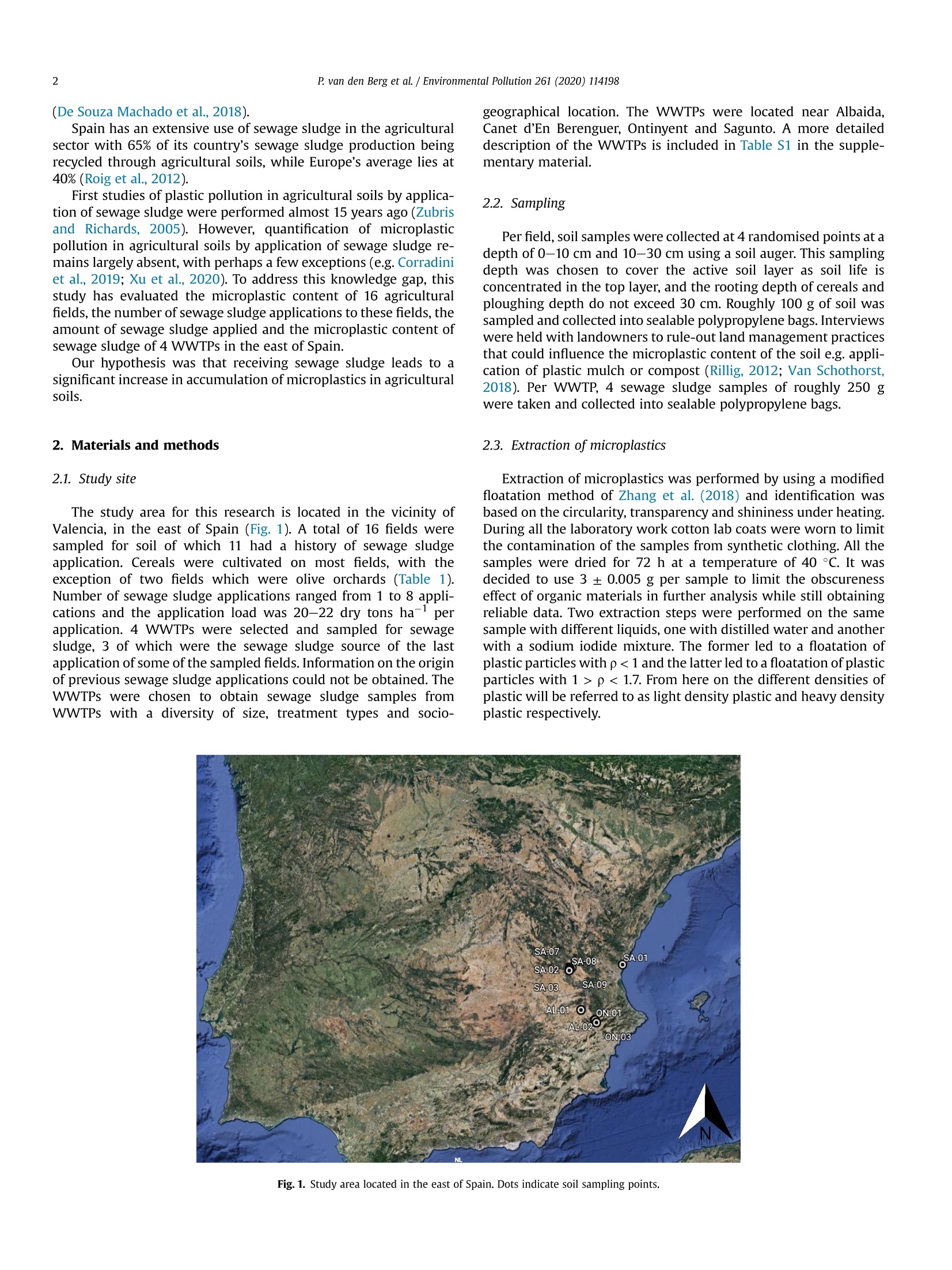

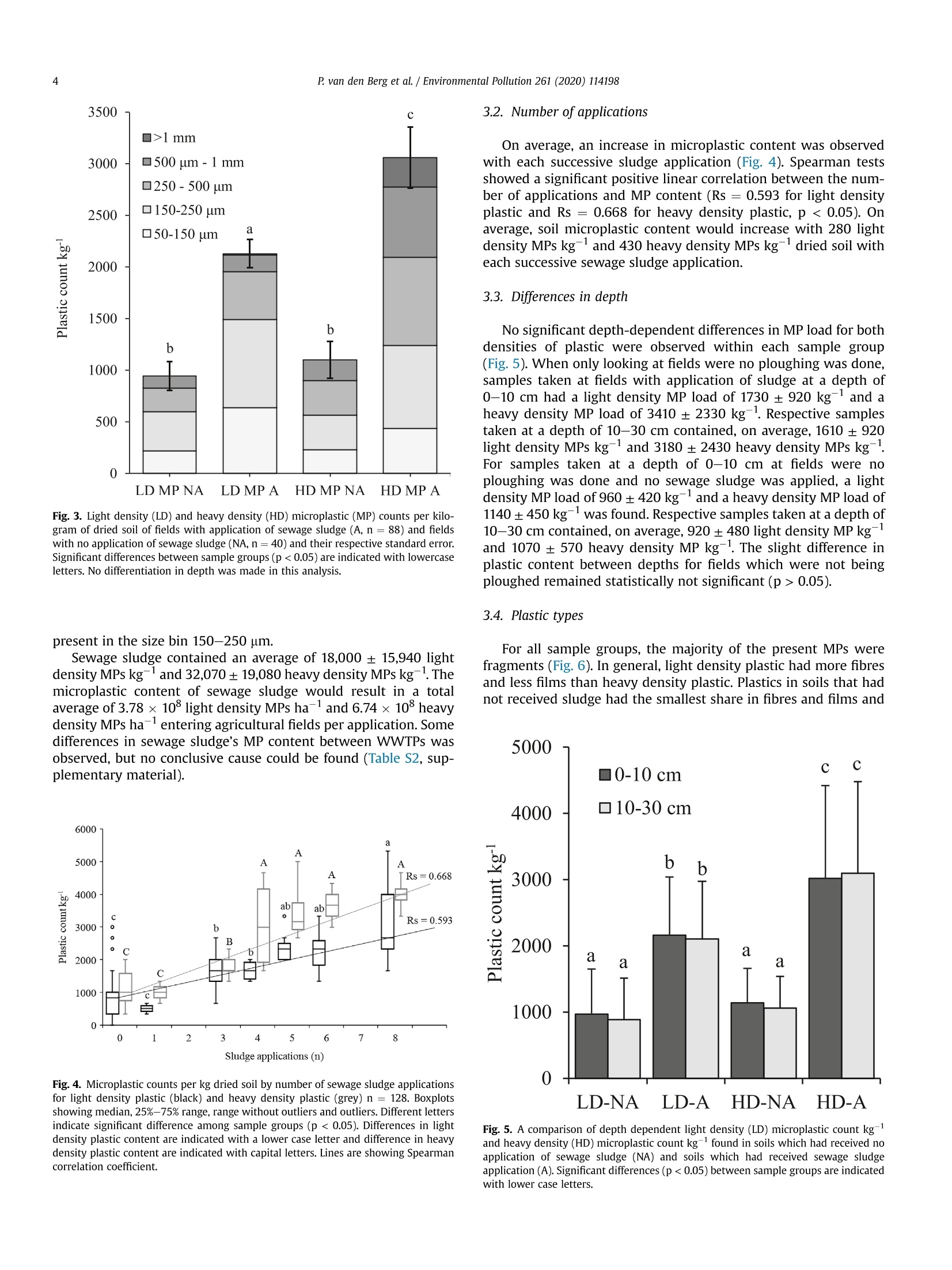
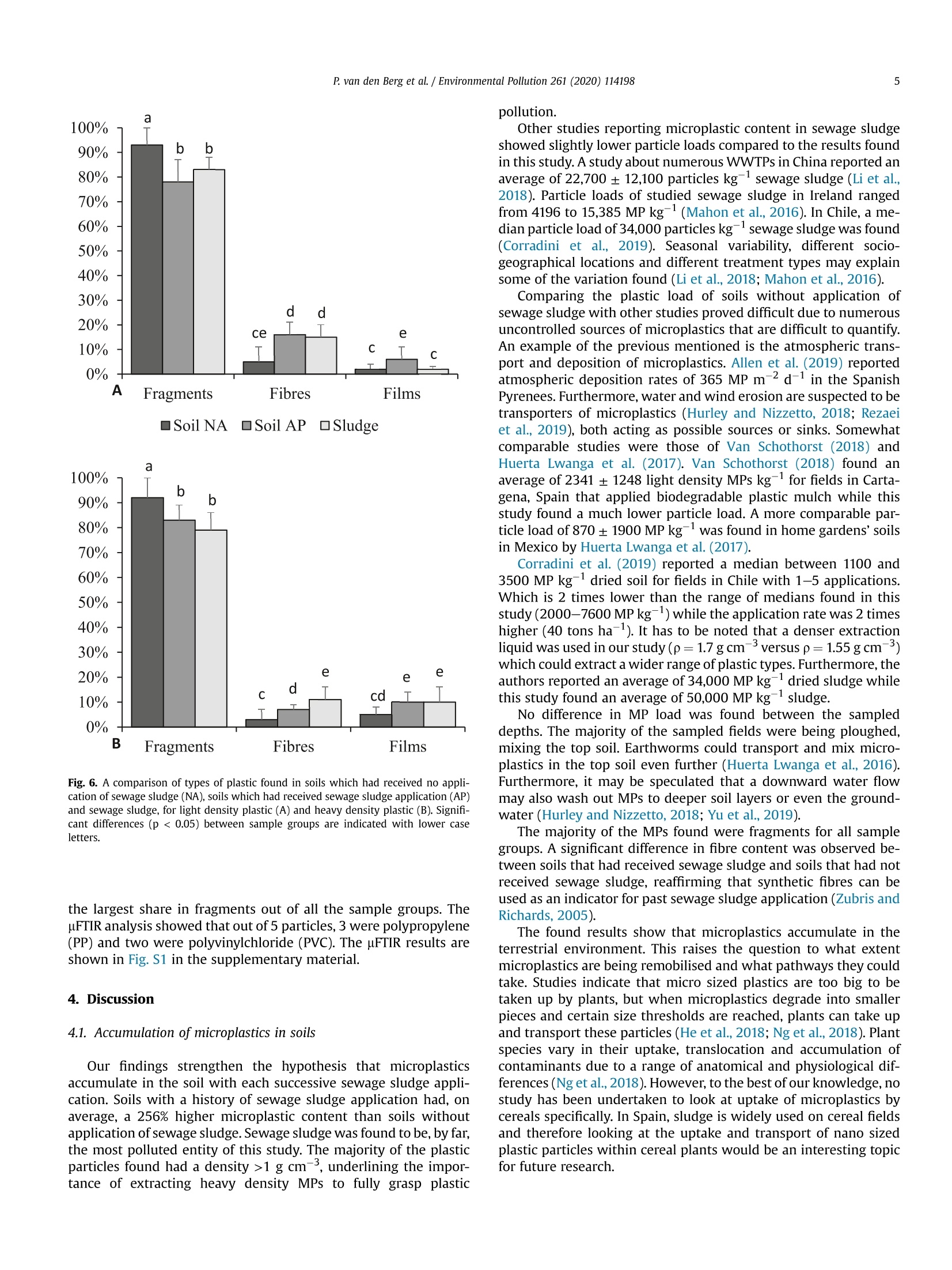


还剩5页未读,是否继续阅读?
中国格哈特为您提供《污水污泥、土壤中微塑料的样品振荡前处理》,该方案主要用于土壤中其他检测,参考标准--,《污水污泥、土壤中微塑料的样品振荡前处理》用到的仪器有格哈特强力高重现振荡器LS500/RO500、格哈特快速干燥仪STL56、德国移液器MM
推荐专场
快速干燥仪
更多
相关方案
更多
该厂商其他方案
更多









